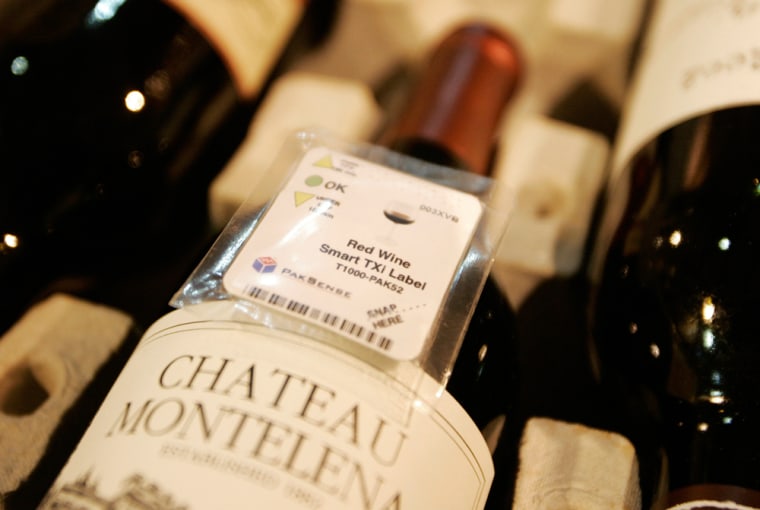Sultry weather can be hard on any traveler, and for wine it can be disastrous.
A high-tech shipping label now being used by some in the industry aims to warn customers if there's a chance they're getting cooked cabernet.
About the size of a sugar packet, the labels can be programmed for a range of temperatures and placed directly on the product or its packaging. A light flashes green if the product stays within specifications and yellow if it doesn't.
Information on exactly what temperatures the product reached and when can be downloaded via a portable reader into a computer spreadsheet. If there is a problem, the data show where it occurred, helpful in determining who's responsible.
"We've been waiting for something like this," said Jayme Silva of the Napa Valley winery Robert Biale Vineyards.
Among those using the technology is WTN Services, a Napa-based shipper that has been offering the temperature monitor to customers of its retail brand Ambrosia, a wine catalog, and is now making it an option for other wineries shipping through WTN.
"It's been a great success," said Chris Edwards, vice president and general manager of WTN, which like Ambrosia is a subsidiary of 1-800-FLOWERS.COM Inc.
The labels cost WTN customers $20 a box — the equivalent of 10 bottles of Two Buck Chuck, but a fraction of the cost of a case of $100-a-bottle Napa cab, Edwards notes.
Made by Boise, Idaho-based PakSense Inc. and on the market for about two years, the temperature monitors had been primarily used by the food industry but lately have been finding a market in wine shipping as well, company spokeswoman Amy Childress said.
Temperature control is key for wine. Heat speeds up aging, which may sound like a good idea but results in diminished flavor. If the bottles get too hot the wine is "cooked," which means it may taste flat or be otherwise flawed.
A low-tech warning sign is if the cork has been pushed up out of the bottle, but that doesn't necessarily mean spoiled wine. On the other hand, a bottle may look fine but be spoiled.
Like many California wineries, Biale avoids shipping in hot months. It will ship overnight in summer, but that's become less popular with rising gas prices.
Biale is currently experimenting with the PakSense label to see if it will prove to be a summer solution, Silva said.
Another California winery, the Schug Carneros Estate Winery in Sonoma, started putting PakSense labels on its shipments this year, using a type of label that is sent back by distributors and downloaded at the winery to provide trip details.
"We actually have gotten a lot of good information," winery office manager Lou Pritchett said
So far, data from the labels, returned from as far away as Denmark, have "really given us a lot of assurance that our wine is in very good condition," Pritchett said.
On the consumer front, New Yorker Reynold Weidenaar frequently orders wine, although he usually deals with the heat issue by buying in cooler months. He said he wasn't inclined to spring for an extra $20 for his shipments of moderately priced wine, but could see the appeal for a high-end collector.
"We've had a few wines where you can see a little bit of leakage, a little bit of residue past the cork," Weidenaar said. "That's always a sign you better be nervous."
Edwards sees the labels as reassurance to people buying expensive wines that the shipping system is working. To avoid transit trauma, WTN has warehouses in California and New York so products don't have to travel too far. It uses packaging called the TemperEco-Pak, which is made of corrugated or pulp materials that control temperatures but can be recycled curbside.
WTN has been using the labels on Ambrosia shipments for about two months and "they've been blinking green upon delivery every time, so that's a good thing," Edwards said.
